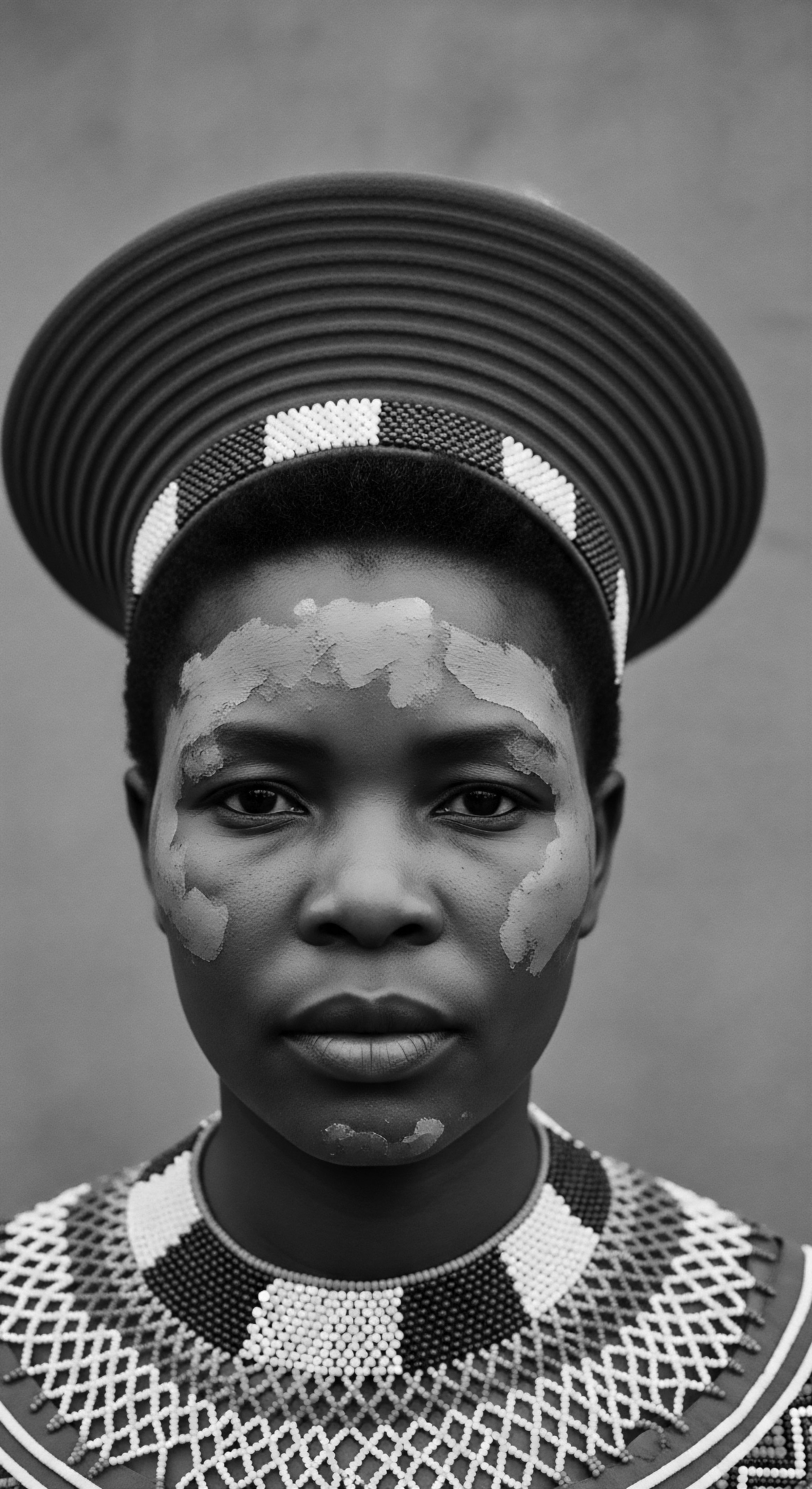
Roots
There is a curious disconnect in how the world often views Afro-textured hair. It is a crown of coils and curves, a vibrant expression of identity, yet it has too often been labelled with terms that betray a lack of understanding. This mischaracterization extends far beyond mere aesthetics; it reaches into the very lineage of humanity, touching upon ancestral practices and profound cultural significance. To comprehend why Afro-textured hair is called misunderstood, we must first journey back to its very genesis, to the elemental biology and ancient practices that shaped its being.
This exploration asks us to peer into a past where hair was not simply an appendage, but a living record, a communal bond, and a spiritual conduit. The initial misunderstanding, perhaps, arises from a gaze unaccustomed to its unique morphology, one that often measures it against a standard it was never meant to meet.

The Hair’s Intrinsic Form
Each strand of Afro-textured hair possesses a singular architecture. Unlike straight or wavy hair, which often grows from round or oval follicles, coily hair emerges from follicles shaped more like flattened ellipses. This distinctive follicular design causes the hair shaft itself to twist and bend as it grows, creating the characteristic curls, kinks, and coils. The hair’s structure, specifically the distribution of keratin proteins and disulfide bonds within its cortex, influences its curl pattern.
These microscopic arrangements dictate the hair’s inherent spring and volume. While modern science illuminates these biological details, ancient communities already understood the hair’s natural tendencies through observation and lived experience. They formulated practices that worked with, rather than against, this intrinsic form, recognizing its unique needs for moisture and gentle handling. The very curl, which some later viewed as “unruly,” is simply a testament to its singular geometry, a biological marvel of nature’s design.
The unique geometry of Afro-textured hair, stemming from its elliptical follicle shape, determines its inherent curl pattern.

The Science of Textured Hair’s Biology
The field of genetics plays a part in understanding hair texture. While no single gene is solely responsible for determining hair curl, the TCHH (trichohyalin) Gene, for instance, has been associated with variations in hair curliness across diverse populations. This genetic blueprint means that hair type is inherited, though the degree of curl can vary within families. Beyond genetics, factors such as hormones, nutrition, and environmental conditions can subtly influence hair’s appearance over a lifetime.
For generations across African societies, the observation of hair’s response to environment, diet, and care informed traditional practices. The resilience of Afro-textured hair, often appearing drier due to its coiled structure inhibiting natural oil distribution down the shaft, was met with purposeful rituals designed to hydrate and protect. The deep understanding of this biology, often unspoken yet practiced for millennia, predates modern scientific tools, yet many ancestral methods find their validation in contemporary dermatological insights.
| Hair Type Description Straight (Type 1) |
| Follicle Shape Round |
| Hair Shaft Appearance Smooth, little to no curl |
| Hair Type Description Wavy (Type 2) |
| Follicle Shape Oval |
| Hair Shaft Appearance Loose S-shape, some bends |
| Hair Type Description Curly (Type 3) |
| Follicle Shape Flattened Oval |
| Hair Shaft Appearance Defined spirals, noticeable curl |
| Hair Type Description Coily (Type 4) |
| Follicle Shape Flattened Elliptical |
| Hair Shaft Appearance Tight coils, kinks, or Z-patterns |
| Hair Type Description Understanding the anatomical origins of diverse hair types is fundamental to appreciating their distinct care needs. |
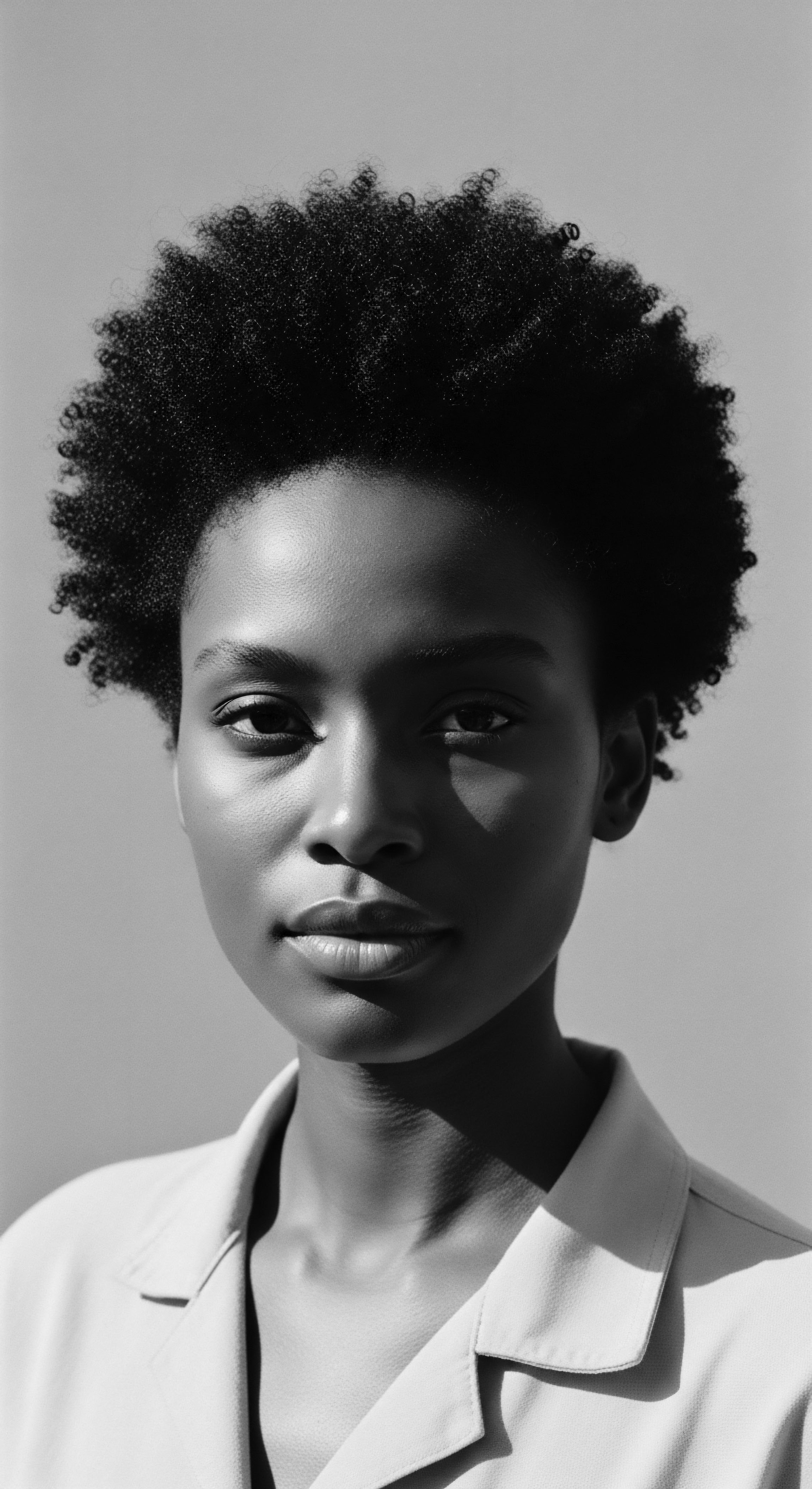
A Misunderstanding’s Historical Roots ❉ A Case Study in Cultural Erasure
The most forceful answer to why Afro-textured hair became misunderstood lies in the brutal history of enslavement and colonialism. In pre-colonial Africa, hair was a profound symbolic tool, communicating social status, heritage, culture, religion, and identity. Hairstyles distinguished lineage, marital status, age, and wealth. The Yoruba people of Nigeria, for example, considered hair a Crown of Glory.
Intricate styling processes, which could take hours or even days, involved washing, combing, oiling, braiding, twisting, and decorating with cloth, beads, or shells. These were not just beauty routines; they were social opportunities for community bonding and the passing down of cultural knowledge.
With the onset of the transatlantic slave trade, the deliberate stripping of identity began. Captured Africans were often forced to shave their heads, a calculated act of humiliation and cultural erasure. European colonial authorities often characterized Afro-textured hair as “kinky” or “woolly,” terms intended to dehumanize and justify subjugation. This misrepresentation fostered a perception of Afro-textured hair as “unprofessional,” “wild,” or “dirty” in comparison to European standards.
The forced removal of traditional tools and ingredients, coupled with the imposition of new environments and limited resources, compelled enslaved people to use whatever was available, sometimes even axle grease or butter, which were not suitable for their hair. This historical trauma seeded the notion of “bad hair,” a concept alien to pre-colonial African societies where hair’s health and versatility were celebrated. This systematic undermining of hair’s cultural significance created a lasting legacy of misunderstanding, one that persists in subtle forms even today.
The forced shaving and mischaracterization of Afro-textured hair during enslavement served as a deliberate strategy to strip identity and erase cultural heritage.

Ritual
From the elemental biology of the strands, we transition to the tender thread of ritual – the daily, weekly, and generational practices that have always been at the heart of Afro-textured hair care. The misunderstanding often arises from a modern, fast-paced world’s inability to appreciate the deliberate, communal, and often painstaking care that is inherent to maintaining textured hair. These practices are not mere routines; they are deep expressions of heritage, resilience, and identity, passed down through the ages, adapting and persisting even through periods of immense adversity. The history of Afro-textured hair styling is a testament to unwavering ingenuity, a constant reassertion of cultural presence in the face of pressures to conform.

Ancestral Roots of Protective Styles
Across Africa, long before the transatlantic crossings, protective styles held profound cultural and practical meaning. Braiding and twisting techniques were not simply aesthetic choices; they served as vital methods to maintain hair health, signify social standing, and even communicate complex messages within communities. Styles like Cornrows, dating back to 3000 BC, could indicate tribal affiliation, marital status, age, or wealth. The meticulous process of creating these styles reinforced community bonds, often serving as a time for storytelling and sharing between women.
When enslaved Africans were forcibly brought to new lands, these protective styles became a powerful means of resistance and survival. Braids could be used to conceal rice seeds for future cultivation or to secretly map escape routes from plantations. This ability of hair to carry hidden messages and preserve life speaks volumes about its deeply ingrained significance, far removed from any superficial judgment.
The Tignon Laws of 1786 in Spanish colonial Louisiana serve as a poignant, specific example of how this heritage of hair was targeted. Governor Esteban Miró enacted these laws, compelling free women of color to cover their hair with a headwrap, known as a Tignon, in public. The intent was clear ❉ to visually mark them as belonging to a lower class, linking them aesthetically to enslaved women, and to suppress their perceived beauty and social advancement. Free Black women, however, defied this oppressive measure with remarkable creativity.
They transformed the tignon from a symbol of subjugation into an expressive statement of beauty and defiance, using luxurious fabrics, intricate tying techniques, and adorning them with ribbons, jewels, and feathers. This act of resistance solidified the headwrap’s place as a potent symbol of Black women’s resilience and enduring cultural identity, extending a tradition of head coverings that had long existed in Africa. The historical response to the Tignon Laws showcases a clear example of how external forces attempted to impose misunderstanding, only to be met with a profound, creative assertion of heritage.
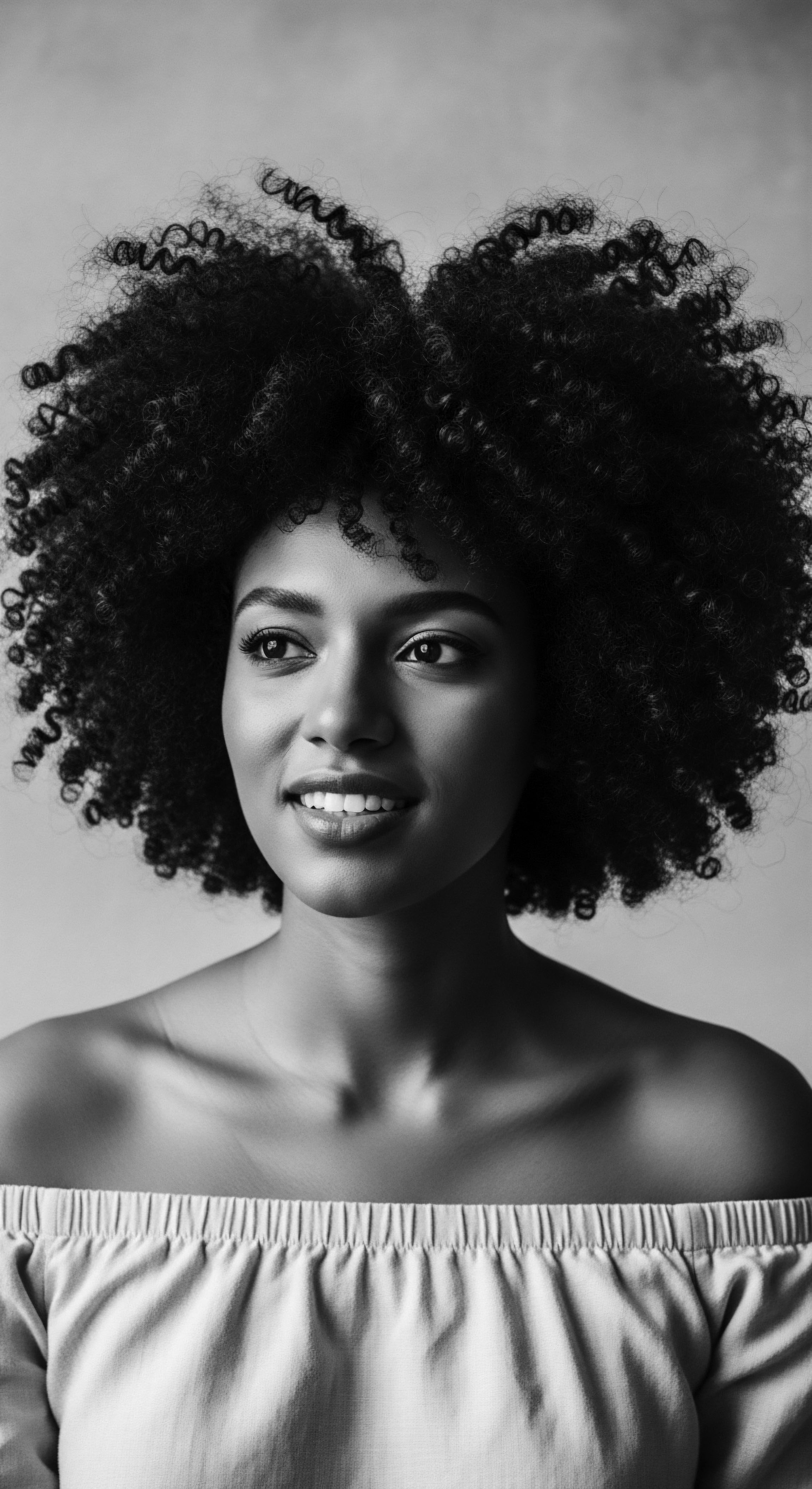
How Does Styling Inform the Misunderstanding of Textured Hair?
The complexity and time required for many traditional Afro-textured hair styles, a measure of their cultural value and artistry in ancestral societies, often became a source of misjudgment in Western contexts. What was once a communal activity, a social ritual that strengthened bonds and passed down generational wisdom, became viewed through a lens of inconvenience or lack of “manageability”. The tools themselves tell a story ❉ the Afro Comb, for example, has been unearthed from archaeological sites in Kush and Kemet (ancient Sudan and Egypt) dating back over 5,500 years. These combs were not mere grooming items; they were works of art, engraved with symbols representing tribal identity, rank, fertility, and even spiritual protection.
Their later re-emergence as a symbol of pride during the Black Power movement of the 1960s and 70s, often featuring a raised fist, directly countered the historical attempts to demonize Afro-textured hair. This transformation of an ancient tool into a political emblem underscores how misunderstanding was actively challenged through cultural reaffirmation.
- Cornrows ❉ Ancient West African technique, often signaling tribal affiliation and social rank.
- Bantu Knots ❉ Originate among Bantu-speaking ethnic groups, traditionally protective and symbolic of cultural heritage.
- Fulani Braids ❉ Associated with the Fulani people of West Africa, distinguished by specific patterns and adornments like beads or shells signifying wealth and identity.
- African Hair Threading (Irun Kiko) ❉ Practiced by the Yoruba, this method stretches hair and retains length, showcasing ancient ingenuity.

The Evolution of Tools and Techniques
The methods and implements used for styling Afro-textured hair have always reflected ingenuity and adaptation. Before the proliferation of modern hair products, communities relied on natural materials and skilled hands. Specialized combs carved from wood, bone, or ivory were designed to navigate the unique structure of coiled hair. The development of various braiding and twisting techniques allowed for diverse expressions of identity while also serving to protect the hair from environmental elements.
The forced migration of enslaved Africans necessitated adaptation; without access to traditional tools or ingredients, some created makeshift combs from scraps. This history of resourcefulness, coupled with the enduring oral transmission of techniques, reveals a profound, living body of knowledge that continues to shape contemporary styling practices. The perceived difficulty or difference in these techniques, when viewed without their cultural and historical backdrop, often contributes to the lingering misunderstanding of Afro-textured hair.

Relay
Having examined the inherent structure and the historical styling practices, we turn now to the ongoing regimen of care, the continuum of knowledge passed through generations, and how this informs the persistent misunderstanding of Afro-textured hair. The misconception often stems from a failure to appreciate the intentionality, ancestral wisdom, and scientific principles embedded in long-standing care rituals. These practices, far from being arbitrary, represent a sophisticated approach to holistic wellness, deeply connected to heritage and communal wellbeing.

Understanding Holistic Care Through Ancestral Wisdom
For centuries, the care of Afro-textured hair in African communities was an integral part of holistic wellbeing, inseparable from the care of the body and spirit. This wisdom emphasized the use of natural, locally sourced ingredients to cleanse, condition, and protect the hair. Traditional African products like Shea Butter, sourced from the nuts of the African shea tree, along with coconut oil, aloe vera, and various herbal extracts, have been used for their moisturizing and restorative properties for generations.
These natural remedies were often prepared and applied within communal settings, transforming a personal act into a shared ritual that reinforced social bonds and transferred knowledge from elders to younger generations. The communal aspect alone, so foreign to individualistic modern beauty routines, highlights a significant divergence in perspective that contributes to the hair’s perceived “otherness.”
Modern science, in many instances, validates these ancestral methods. The deep conditioning benefits of ingredients like shea butter and coconut oil, their ability to seal moisture and protect the hair shaft, are now widely recognized. African black soap, traditionally made from plantain skins, cocoa pods, and palm oil, offers a gentle yet effective cleanse without stripping natural oils, a principle now championed in contemporary “low-poo” or “no-poo” hair care movements.
This convergence of ancient wisdom and scientific understanding underscores that the “misunderstanding” often arises from a lack of historical context and an overreliance on Eurocentric beauty ideals that failed to acknowledge the inherent logic and efficacy of these traditional practices. The hair’s natural inclination towards dryness due to its coiled structure, which impedes the travel of natural sebum down the strand, meant moisture retention became a central tenet of care, a principle understood and practiced for millennia.
Ancestral hair care practices, centered on natural ingredients and communal rituals, embody a holistic wisdom often validated by modern scientific understanding.

What is the Historical Significance of Nighttime Hair Rituals?
The practice of nighttime hair protection, particularly the use of head coverings, has a compelling history rooted in both practicality and cultural significance. Headwraps and bonnets have been traditional attire in African countries for centuries, serving to protect hair from the elements, maintain hairstyles, and signify social status or tribal affiliation. During enslavement, these coverings gained another layer of meaning ❉ they were worn to protect hair from harsh working conditions and became a symbol of resilience and identity in the face of immense adversity.
The simple bonnet, often dismissed in contemporary Western fashion, carries centuries of Black resilience. From its origins as traditional attire in African nations to its weaponization as a tool of control during enslavement – with laws sometimes mandating head coverings to visibly distinguish enslaved women – the bonnet was then reclaimed as a form of creative and cultural expression. Women adorned them with luxurious fabrics, feathers, and jewels, transforming them into statements of beauty and defiance.
This historical progression illustrates how an object, initially a symbol of cultural identity, became a tool of oppression, only to be re-appropriated as a sign of enduring heritage. The misunderstanding often arises from a superficial view of the bonnet, missing its deep historical weight and its continued role in preserving hair health and cultural pride.

Problem Solving ❉ Bridging Ancient Insight with Modern Needs
Addressing the common “problems” associated with Afro-textured hair, such as dryness or breakage, benefits immensely from a heritage-informed lens. Many modern solutions echo ancestral approaches. The emphasis on moisture retention through oils and butters, for example, is a direct continuation of practices seen in Africa for millennia. Ingredients like Chebe Powder, originating from the Bassara/Baggara Arab tribe in Chad, were used to strengthen hair and retain length, reducing breakage.
This ancient knowledge speaks to a sophisticated understanding of hair needs that transcends any “problem” categorization, viewing healthy hair as a baseline. The continued policing of Afro-textured hair in schools and workplaces, even in modern times, highlights a persistent societal misunderstanding that ignores this deep historical and scientific basis of care. The CROWN Act, created in 2019, aims to counter this by providing legal protection against discrimination based on race-based hairstyles, recognizing hair texture and protective styles like braids and locs as expressions of cultural identity. This ongoing legislative effort reflects the enduring need to educate and shift perspectives on Afro-textured hair beyond superficial biases. It argues that discrimination against these hairstyles is a form of racial discrimination itself.
| Traditional Practice Communal Hair Dressing |
| Ancestral Context Social bonding, knowledge transfer, spiritual activity |
| Modern Application / Understanding Salon culture as community hubs, shared online resources, familial bonding |
| Traditional Practice Use of Natural Oils & Butters |
| Ancestral Context Moisture retention, protection from elements, hair strengthening |
| Modern Application / Understanding Ingredient lists in contemporary products, "clean beauty" movement validation |
| Traditional Practice Protective Styling (Braids, Twists) |
| Ancestral Context Identity markers, spiritual significance, hair preservation, communication |
| Modern Application / Understanding Versatile aesthetic, reduced manipulation, length retention, cultural pride |
| Traditional Practice Head Coverings (Bonnets, Wraps) |
| Ancestral Context Protection, social status, defiance during oppression |
| Modern Application / Understanding Nighttime hair protection, fashion statement, cultural affirmation |
| Traditional Practice The enduring principles of Afro-textured hair care demonstrate a seamless continuity from ancestral wisdom to modern practices, bridging millennia of heritage. |
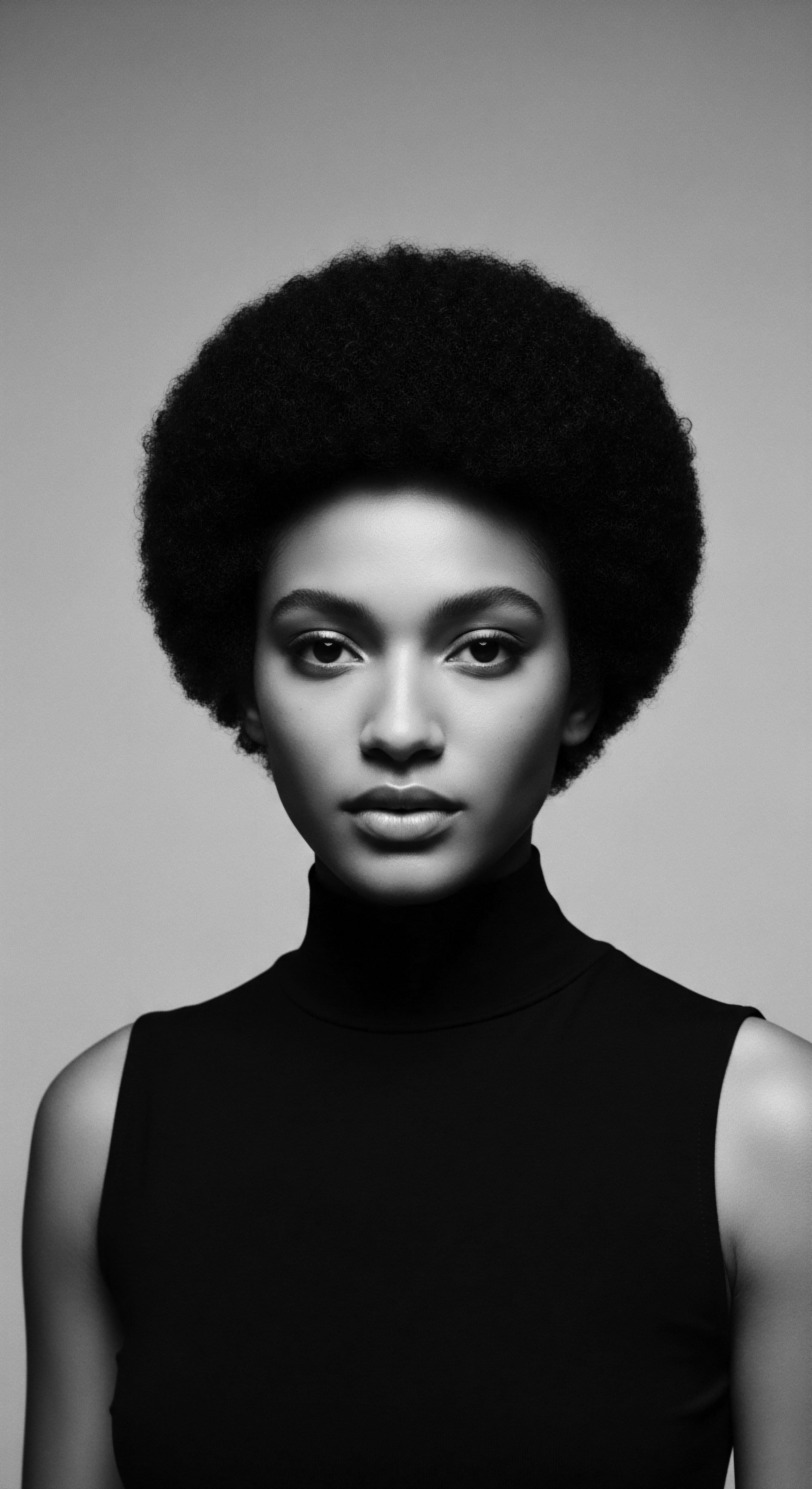
Relay
The journey into the depths of Afro-textured hair requires more than a mere glance at its visible form or a casual acquaintance with its care; it requires a profound, informed engagement with its rich cultural and scientific history. The persistent misunderstanding often comes from a gaze that overlooks this intricate interplay, failing to acknowledge hair as a potent symbol of identity, a vessel of ancestral stories, and a canvas for enduring creativity. This section aims to provide an even more granular analysis, drawing upon research and scholarship to dismantle superficial interpretations and reveal the profound layers of meaning embedded within textured hair heritage.
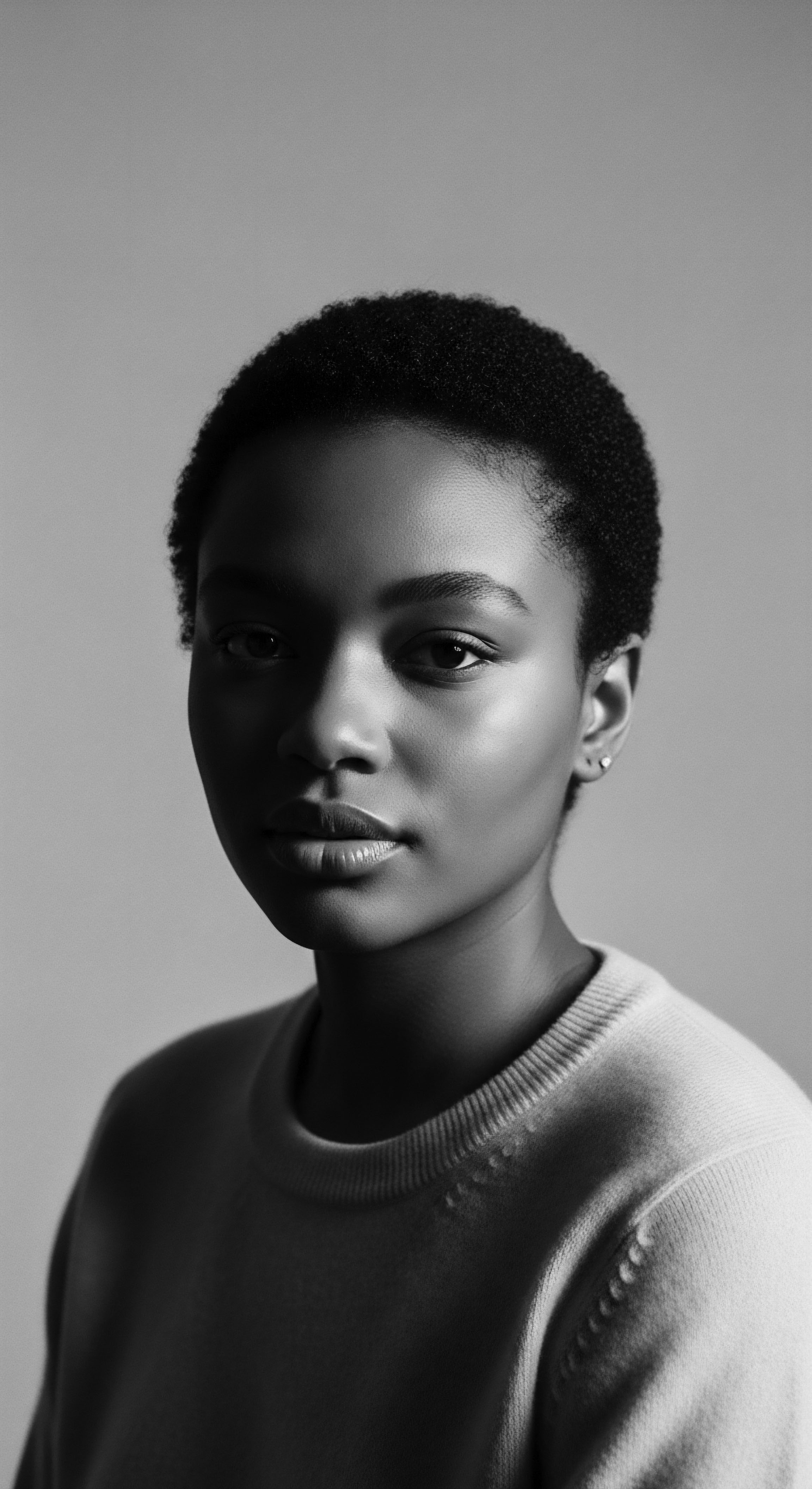
The Interconnectedness of Hair, Identity and Ancestry
In many African societies, hair holds an ontological significance, serving as a physical manifestation of metaphysical orientation. It is not simply a biological outgrowth; it is a sacred extension of self, the highest point of the body, considered closest to the divine. This belief system meant that hair styles and care rituals were inextricably linked to spiritual practices and social communication. For instance, among the Yoruba People of Nigeria, specific braided styles were used to send messages to the gods.
The act of shaving hair could signify mourning or a lack of dignity. This deep spiritual and social calibration of hair within African cultures is often lost in Western interpretations, which tend to reduce hair to a matter of personal grooming or fashion. The misunderstanding therefore stems from a failure to appreciate this profound symbolic weight, to see the crown not just as hair, but as a living connection to a vast, historical continuum.
This historical significance extends to specific styles. The Afro Hairstyle, for example, which gained prominence during the Civil Rights and Black Power movements of the 1960s, was a direct reclamation of African aesthetics and a powerful political statement against Eurocentric beauty standards. This was a deliberate act of choosing to wear hair in its natural, unbound state, affirming Black identity and challenging the historical policing of Black hair. The concept of “good hair” versus “bad hair,” a colonial construct rooted in anti-Black racism, forced many to adopt straightening methods to conform to societal expectations, seeking to dissociate from what was deemed “primitive”.
The resurgence of natural styles represents a collective memory, a reclamation of ancestral practices that were deliberately suppressed. This movement is not simply about aesthetics; it carries the weight of centuries of struggle and the profound joy of self-acceptance, reflecting a healing of historical wounds related to hair’s identity.
The spiritual and social dimensions of Afro-textured hair in African cultures highlight its profound role as a living connection to ancestry.

Genetics, Diversity, and Misconception
From a scientific standpoint, the diversity of Afro-textured hair types – from loose curls to tightly coiled patterns – is a remarkable display of human genetic variation. While popular classification systems (like 3A to 4C) aid in care, they can sometimes inadvertently reinforce a hierarchy of desirability. The scientific reality is that hair curliness is a multifactorial trait, influenced by a combination of genes, not just a single dominant or recessive one. The TCHH Gene is a known contributor to hair curl variation, but its role does not negate the influence of other genetic factors or even environmental elements.
Historical genetic studies often focused on populations of European ancestry, missing a significant portion of the genetic variation that explains the wide spectrum of hair types seen globally. This narrow scientific lens, at times, contributed to a perceived “otherness” for hair textures that did not fit neatly into observed categories. The idea that specific hair types are “harder to manage” is often a reflection of a lack of appropriate knowledge, suitable tools, or products designed for its structure, rather than an inherent quality of the hair itself.
The very terminology used to describe Afro-textured hair has often been loaded with negative connotations, contributing to misunderstanding. Words like “kinky” and “nappy,” once weaponized during enslavement to dehumanize, have been reclaimed by some communities as terms of endearment and pride, a powerful act of linguistic subversion. However, their historical burden continues to contribute to societal bias against natural hair.
The ongoing legislative efforts, such as the Crown Act, aim to counter this deeply embedded bias by prohibiting discrimination based on hair texture and protective styles in workplaces and schools across various states. This legal recognition underscores that the “misunderstanding” of Afro-textured hair is not a benign aesthetic preference but a systemic issue with tangible social and economic consequences for individuals and communities of African descent.
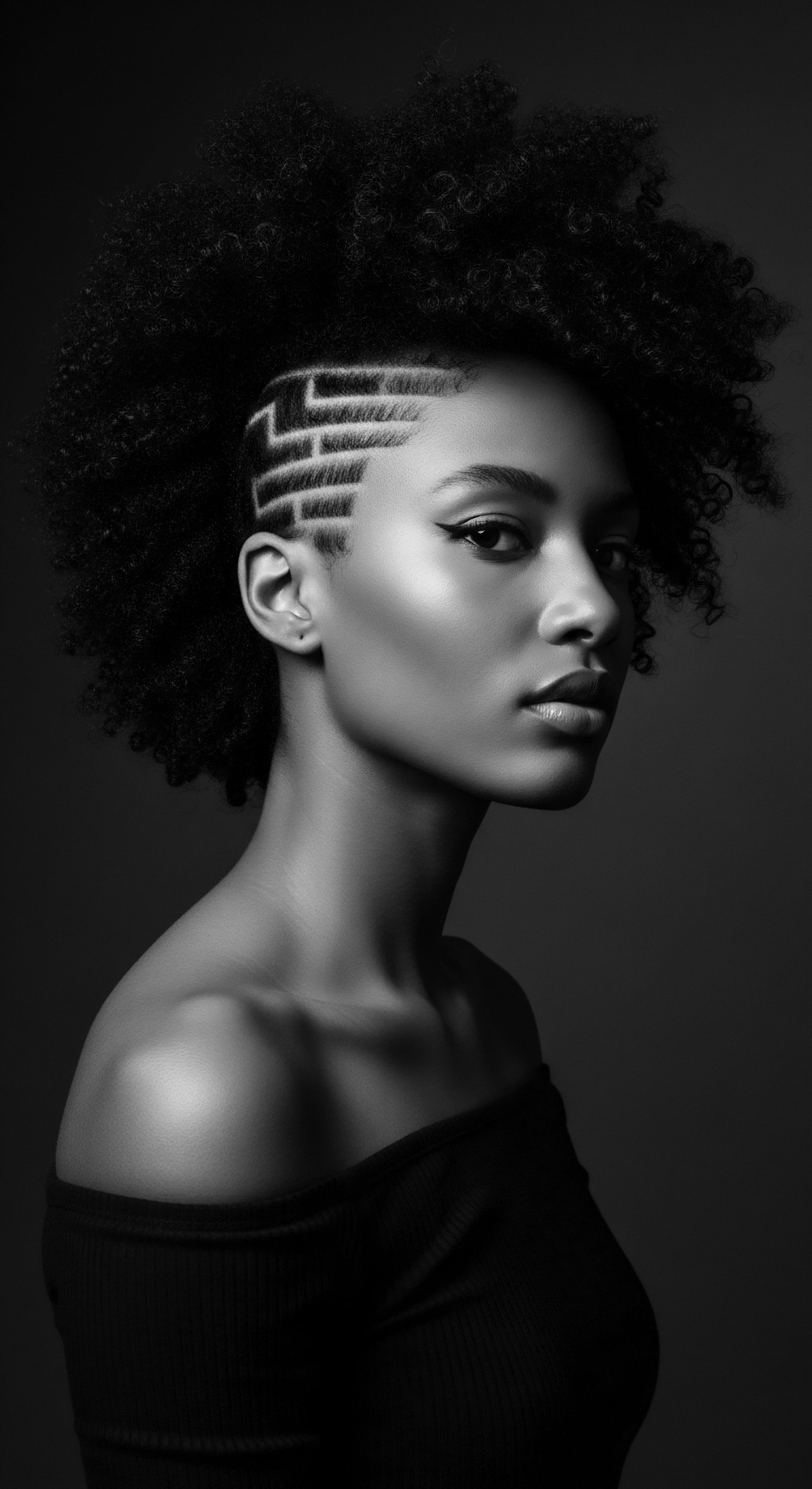
The Living Archive of Ancestral Practices
The legacy of Afro-textured hair care operates as a living archive, each traditional practice a repository of ancestral knowledge. Consider the ethnobotanical wisdom embedded in the use of plants like Moringa, known for its nourishing properties, or the historical application of various clays for cleansing the scalp. These were not random choices; they were the result of centuries of observation, experimentation, and refinement within specific ecosystems.
The methods of preparing these ingredients, often involving slow processes of extraction or fermentation, speak to a patient, methodical approach to wellness that contrasts sharply with the quick-fix mentality of modern consumerism. The resilience of these practices, surviving the disruption of forced migration and cultural suppression, is a testament to their efficacy and profound cultural value.
The communal spaces where hair was tended – from village gatherings under a shade tree to contemporary braiding salons in diasporic communities – serve as continuous sites for the transmission of this heritage. These spaces are more than commercial establishments; they are cultural hubs, places where stories are shared, identities are affirmed, and ancestral wisdom finds new expression. The misunderstanding of Afro-textured hair frequently overlooks these intangible aspects – the community, the history, the scientific ingenuity of ancient care. To truly comprehend why it is called misunderstood, one must look beyond the surface of the coil and into the deep, living stream of heritage that flows through every strand.
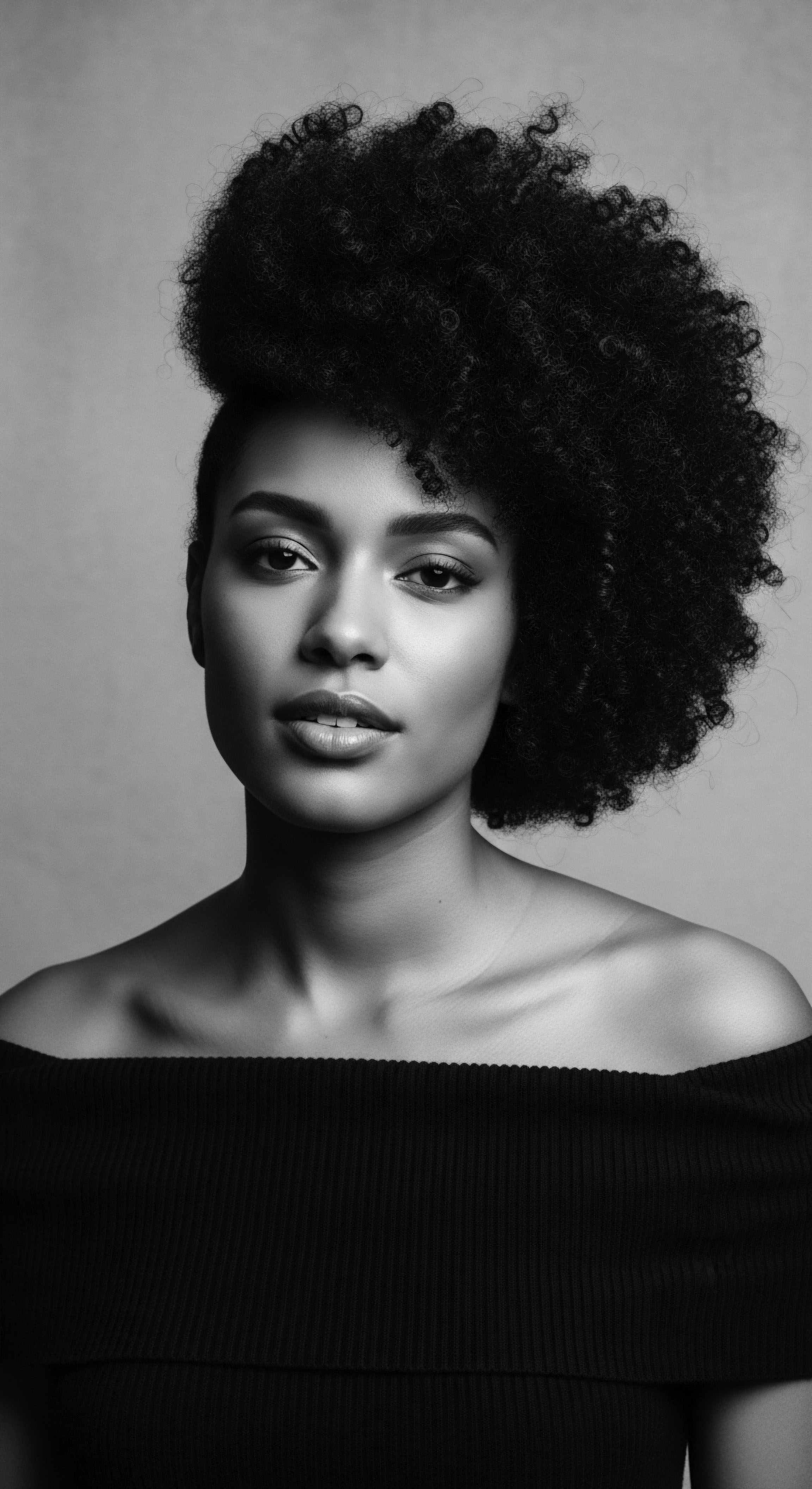
Reflection
The journey through the very roots of Afro-textured hair, its ancient rituals, and its enduring relay of knowledge reveals a truth far richer than any singular misunderstanding. The hair, in its myriad forms, is not simply a biological wonder; it is a profound historical document, a living testament to resilience, creativity, and the unwavering spirit of those who wear it. Roothea’s ‘Soul of a Strand’ ethos acknowledges this, viewing each coil and curl as part of a living, breathing archive of human experience, identity, and ancestral connection. The perception of Afro-textured hair as “misunderstood” is less a commentary on the hair itself and more a reflection of a world that has, at times, failed to perceive its inherent dignity, its deep-seated history, and its multifaceted meanings.
This perception has often stemmed from a colonial gaze, one that sought to devalue what it did not comprehend, to control what it deemed unruly. Yet, through centuries of suppression, neglect, and outright discrimination, textured hair has stood, vibrant and proud, carrying the whispers of ancient lands and the strength of countless generations. Its history is one of defiance, ingenuity, and profound beauty, an unwavering affirmation of self. The ongoing reclamation of natural hair, the celebration of its diverse patterns, and the re-education around its care mark a powerful return to an ancestral appreciation. This shift invites us all to look deeper, to listen to the stories held within each coil, and to recognize that what was once called misunderstood is, in truth, deeply understood by those whose heritage it so profoundly represents.
References
- Abiodun, H. O. & Fashola, J. O. (2023). Ontology of Hair and Identity Crises in African Literature. IASR Journal of Humanities and Social Sciences, 6(3), 33-41.
- Afriklens. (2024, November 1). African Hairstyles ❉ Cultural Significance and Legacy.
- Afriklens. (2025, April 12). How African Hairstyles Reflect Identity ❉ and Heritage.
- BLAM UK CIC. (2022, September 15). The History of Black Hair.
- CurlyTreats. (2025, February 8). Afro comb ❉ the cultural and political legacy behind this iconic hair tool.
- Gale Review. (2021, November 23). African Hairstyles – The “Dreaded” Colonial Legacy.
- Genesis Career College. (n.d.). History of Braids ❉ More Than Just a Hairstyle.
- Healthline. (2021, August 12). Is Curly Hair Dominant or Recessive? How DNA Affects Hair.
- Khumbula. (2024, April 16). A Crowning Glory ❉ Hair as History, Identity, and Ritual.
- My Sasun. (2023, May 19). Exploring the Rich World of Nigerian Hair and Beauty Products.
- NOIR ‘N NOLA. (2019, March 25). The Tignon Law ❉ How Black Women Formed Decor Out of Oppression.
- reframe52. (2024, February 8). Tignon Laws & Black Women’s Creative Resistance.
- SonsOn. (2021, April 24). The History Of Head Wraps In Black Culture.
- The New York Historical. (n.d.). Fashionable Rebellion.
- The Official CROWN Act. (n.d.). About.
